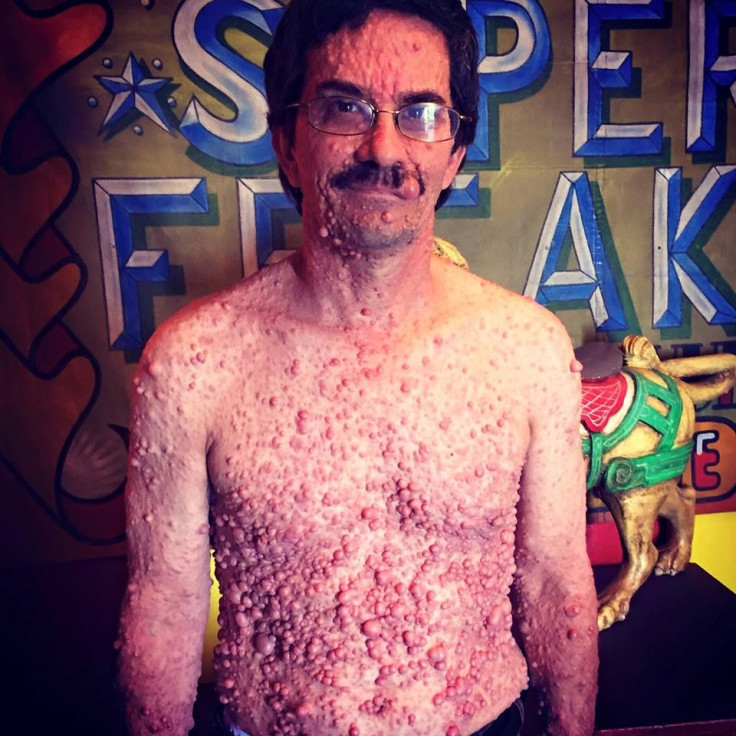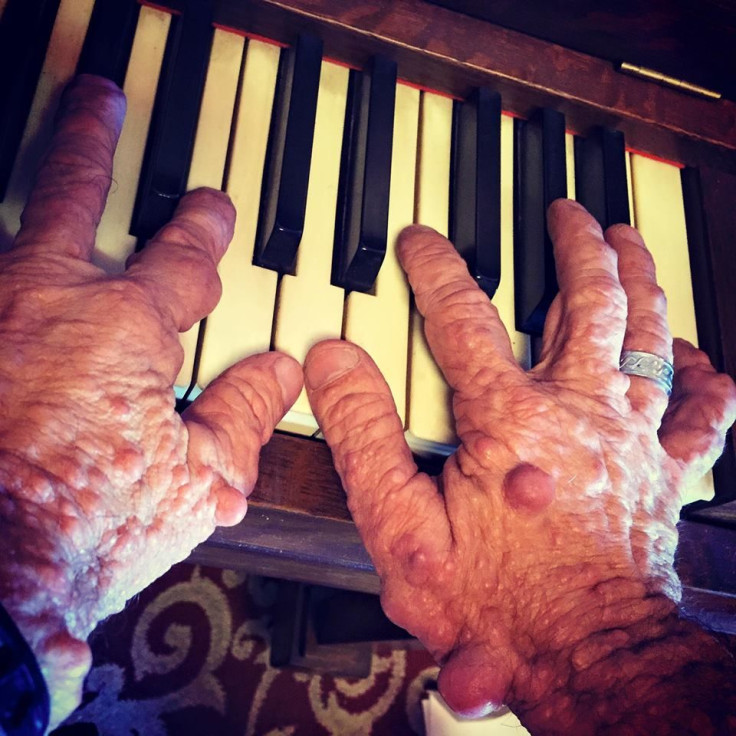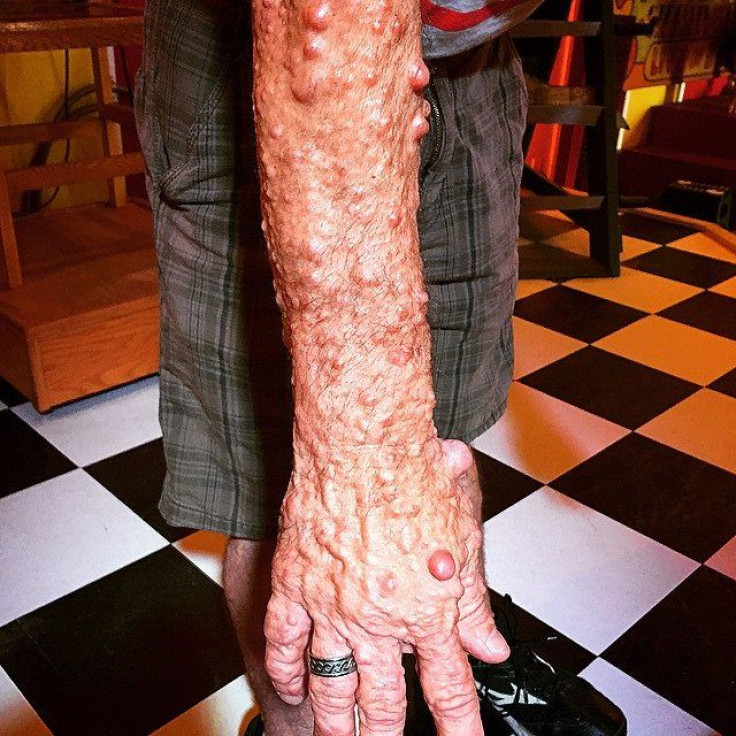'Bob The Bubble Boy,' Man With Neurofibromatosis, Joins Venice Beach Freakshow To Raise Awareness For His Condition

A 50-year-old man covered in fleshy lumps has officially joined the Venice Beach Freakshow, a troupe known for its bizarre set of characters with physical deformities or abnormalities.
Bob Heslip of Tuscon, Ariz., suffers from neurofibromatosis type 1 (NF-1), a genetic disorder that causes large lumps to form all over his face and body. The condition, which he’s had since puberty, has no treatment or cure, and is very rare — it affects about one in 3,000 people. There are also two other types of neurofibromatosis, including NF-2 and schwannomatosis, both of which are rarer than NF-1.
Heslip has experienced various trials and tribulations with the condition, despite the fact that he’s married, has children, and seems to live a well-adjusted life. One issue involves his job at Dollar Tree, where customers don’t want him touching items because they fear he’s contagious. This is part of the reason why he wants to raise awareness about the condition: It’s not contagious; it’s strictly genetic. And fortunately for Heslip, his lumps aren’t painful.


Recently, Heslip and his family traveled to Los Angeles on vacation, and he came across the Venice Beach Freakshow when the owner came up to him and began talking to him about NF-1. This conversation turned into Heslip performing for the audience.
“I went to the front, took off my shirt and the crowd went crazy!” Heslip told the Huffington Post. “When I met the performers, there was a feeling of belonging. I felt at home.”
Several weeks ago, the freakshow invited Heslip to join their crew — which involves a bearded woman, a man completely covered in hair, and the smallest couple in American — as the “Bubble Boy.” Joining the freakshow has allowed him to finally feel normal again.
“I want to teach people that it’s not taboo to ask questions,” he said. “I’m OK talking about it. My son and oldest daughter also have this condition and my speaking out about it gets them excited. They know my attitude is positive.”
If you read the heartbreaking story of Chandra Wisnu, you’ll understand the importance of raising awareness about this condition. Instead of being afraid of people who look different, we ought to embrace and help them.



























